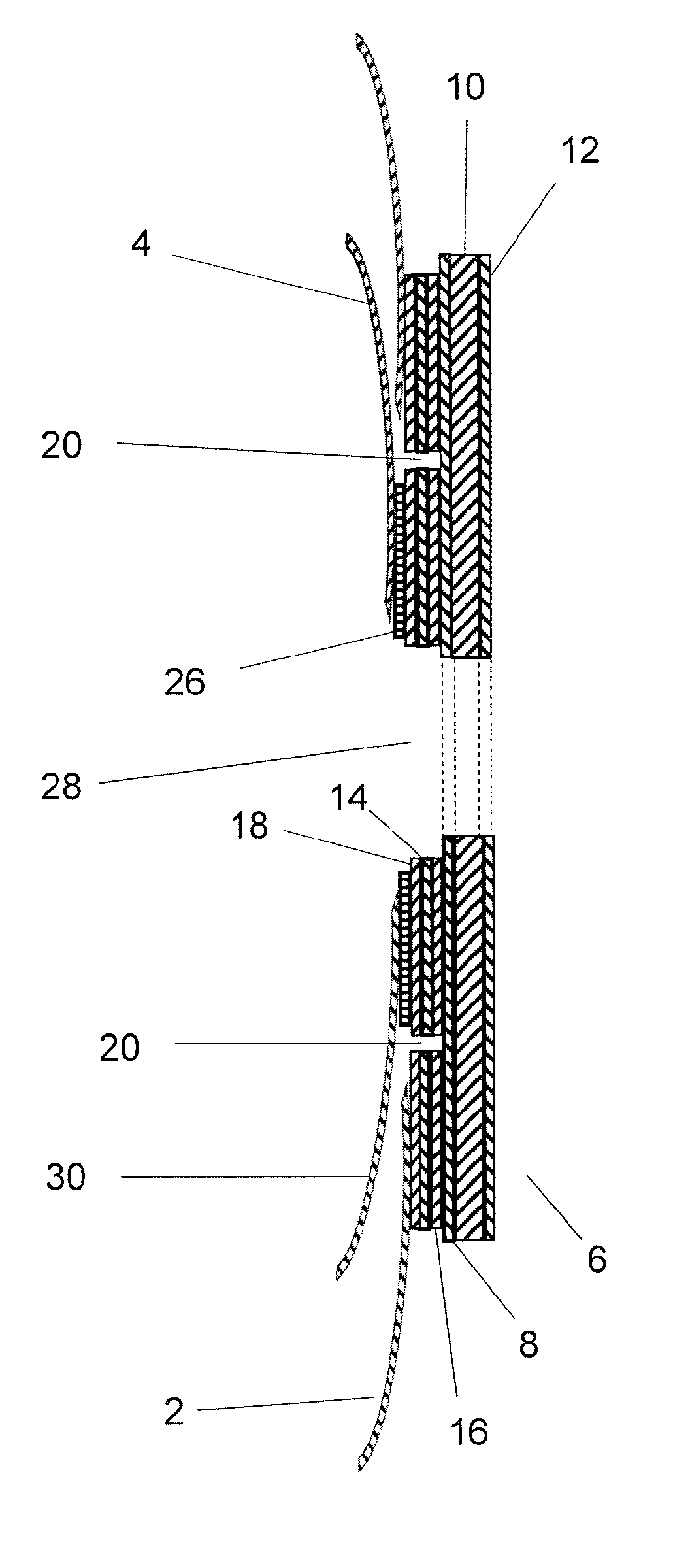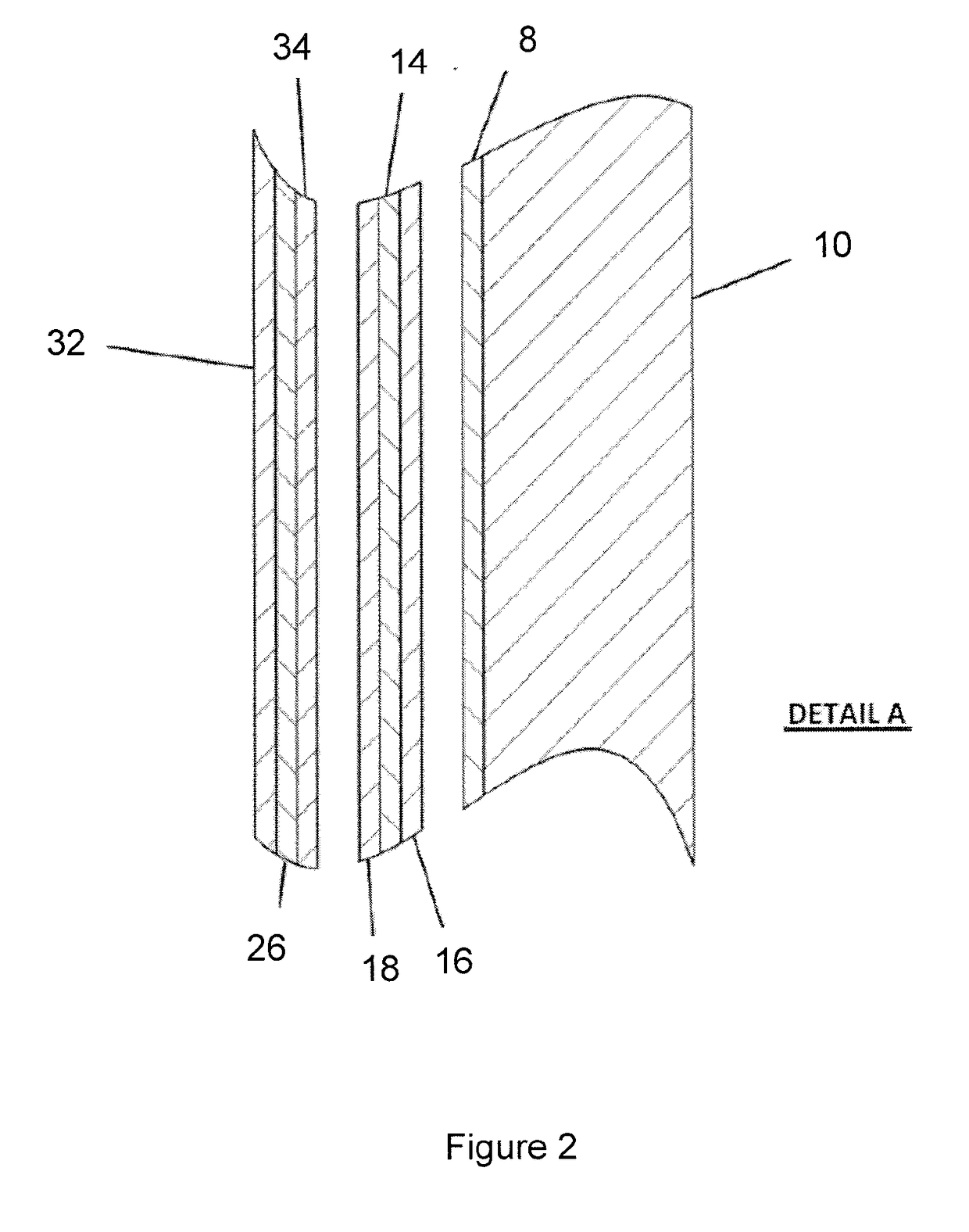Ostomy bag
- Summary
- Abstract
- Description
- Claims
- Application Information
AI Technical Summary
Benefits of technology
Problems solved by technology
Method used
Image
Examples
Embodiment Construction
[0076]The invention will now be described in more detail, but not limited, by reference to the specific embodiment illustrated in the drawings.
[0077]Referring now to the drawings, FIGS. 1 to 4 show an ostomy bag assembly according to a first embodiment of the invention.
[0078]The ostomy bag assembly of FIGS. 1 to 4 comprises an outer bag 2 and an inner bag 4 attached to an adhesive flange 6.
[0079]The adhesive flange 6 comprises a polymeric backing film (first polymeric support layer) 8 which, in this embodiment is formed from polyurethane and has a thickness of approximately 30 μm. Supported on the backing film 8 is a layer 10, approximately 0.6 mm to 0.9 mm thick, of a hydrocolloid adhesive. The hydrocolloid adhesive, which may be of conventional type, serves to secure the ostomy bag to the body of a patient. A siliconised paper release layer 12 covers the hydrocolloid adhesive layer and protects the adhesive layer against damage and / or drying out prior to use of the bag.
[0080]The l...
PUM
| Property | Measurement | Unit |
|---|---|---|
| Heat | aaaaa | aaaaa |
| Weldability | aaaaa | aaaaa |
| Polymeric | aaaaa | aaaaa |
Abstract
Description
Claims
Application Information
 Login to View More
Login to View More - R&D
- Intellectual Property
- Life Sciences
- Materials
- Tech Scout
- Unparalleled Data Quality
- Higher Quality Content
- 60% Fewer Hallucinations
Browse by: Latest US Patents, China's latest patents, Technical Efficacy Thesaurus, Application Domain, Technology Topic, Popular Technical Reports.
© 2025 PatSnap. All rights reserved.Legal|Privacy policy|Modern Slavery Act Transparency Statement|Sitemap|About US| Contact US: help@patsnap.com



